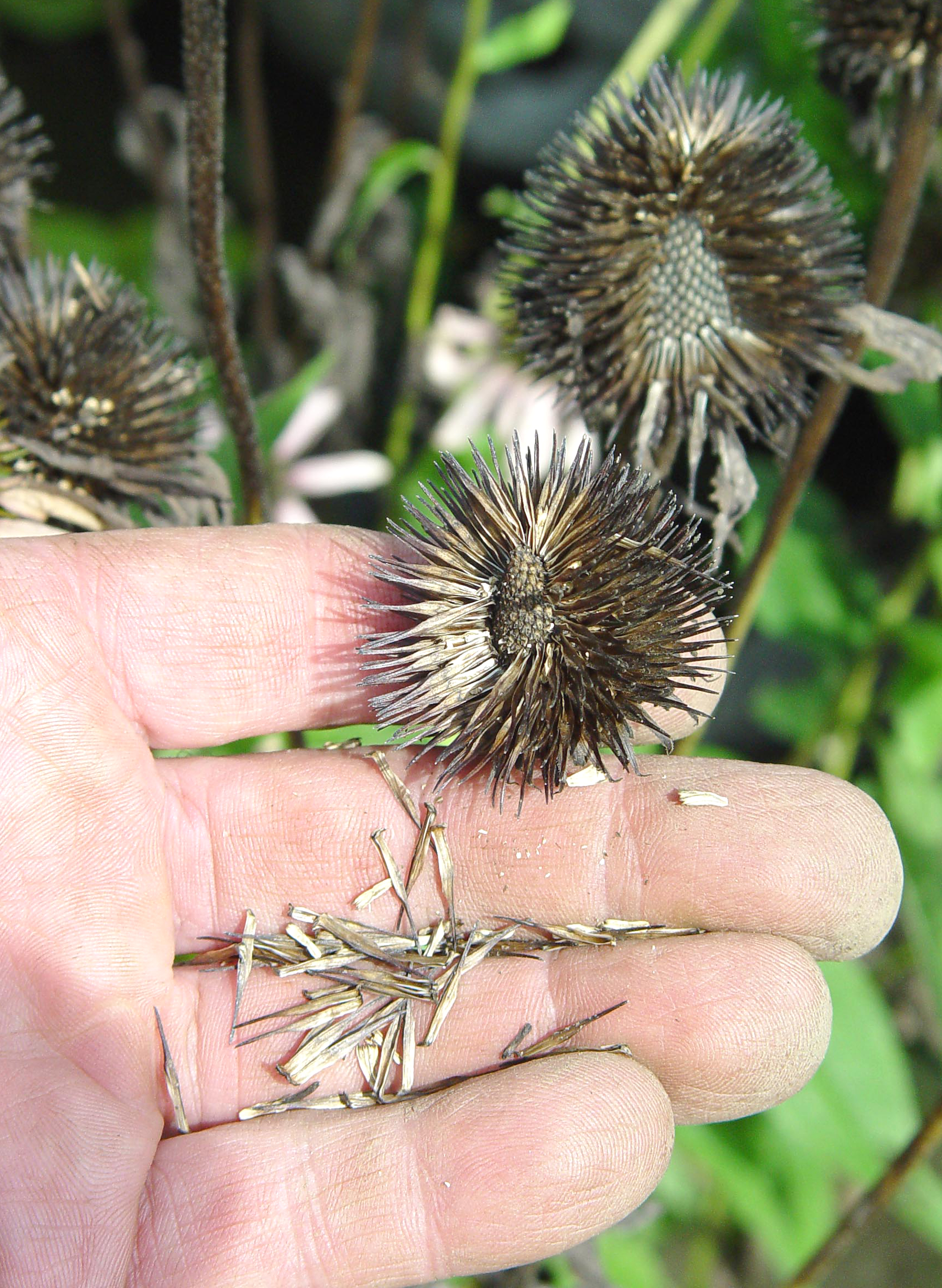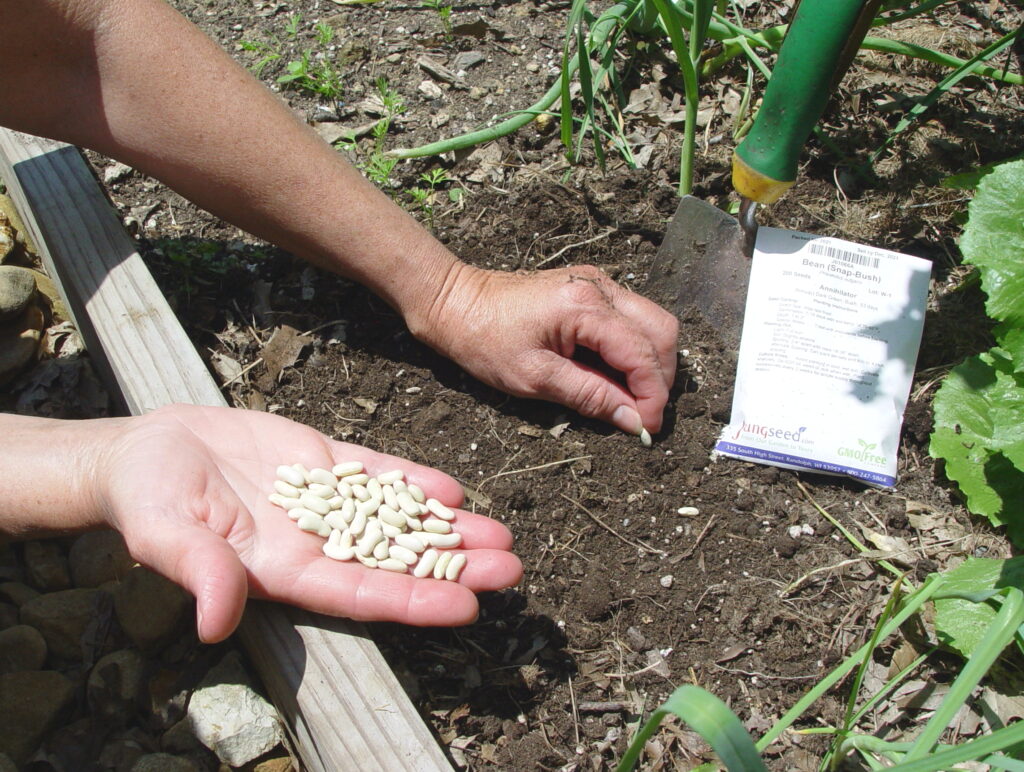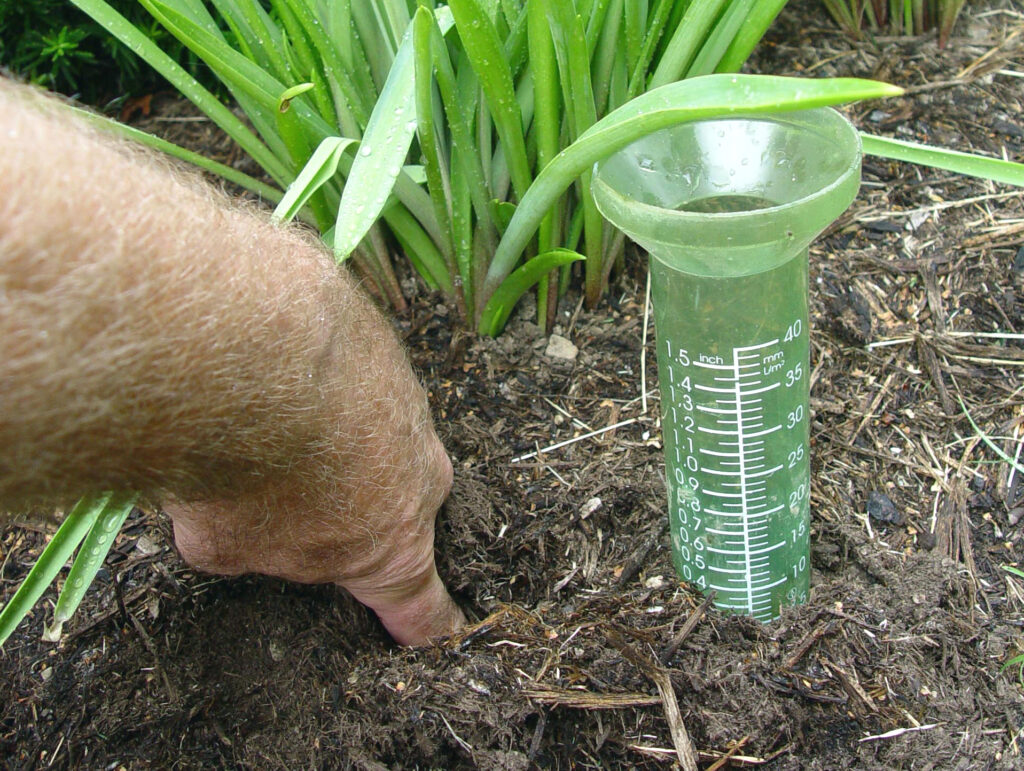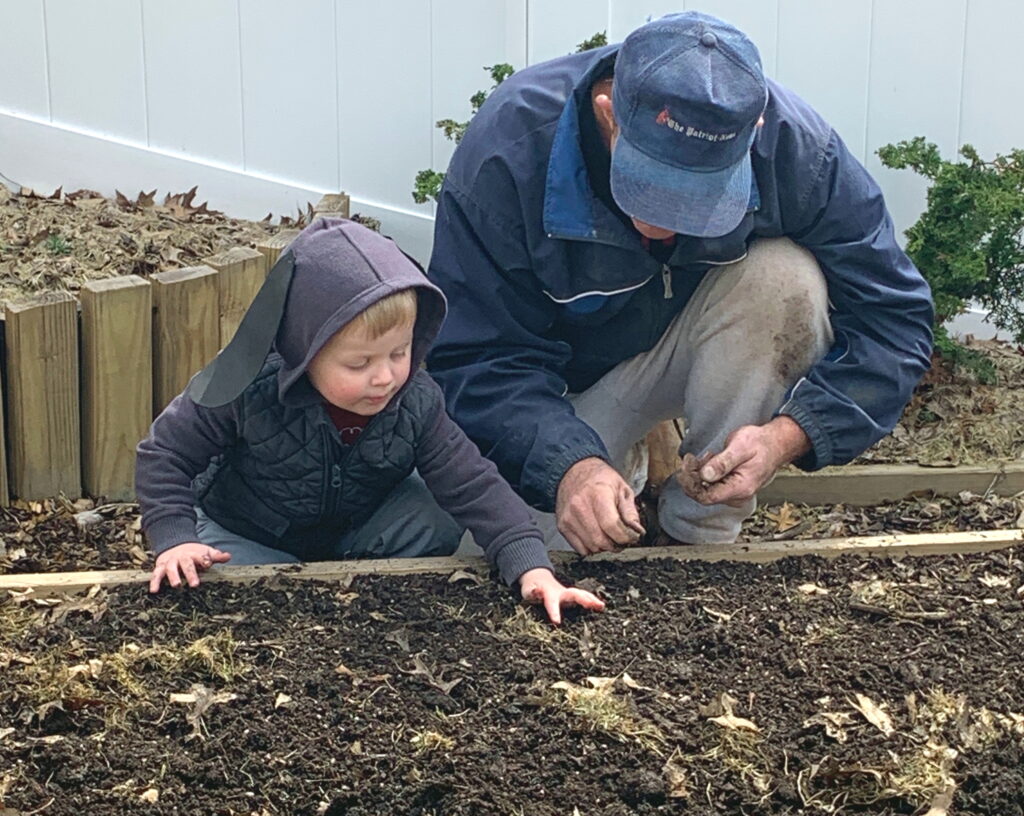![]() Even cheaper than buying greenhouse transplants on sale or starting your own seeds inside is direct-seeding outside.
Even cheaper than buying greenhouse transplants on sale or starting your own seeds inside is direct-seeding outside.
Direct-seeding is simply tamping seeds into loosened, moistened garden soil at the right time of year. Similar to how nature does most of its planting, direct-seeding can cut a flower budget down to pennies on the dollar.
Save your own seed each year instead of buying packets, and you can direct-seed the following year at no cost. (Seed saved from heirloom or traditional “open-pollinated” plants works better than from hybrid varieties, which often produce no or sterile seeds and variable offspring.)
Many annual and perennial flowers start readily from seeds planted directly into the ground.
 Some of the easiest are marigolds, zinnias, cosmos, poppies, alyssum, cornflowers (bachelor’s buttons), larkspur, snapdragons, sweet peas, floss flowers (ageratum), flowering tobacco, gloriosa daisy, hollyhocks, nasturtiums, strawflowers, and sunflowers.
Some of the easiest are marigolds, zinnias, cosmos, poppies, alyssum, cornflowers (bachelor’s buttons), larkspur, snapdragons, sweet peas, floss flowers (ageratum), flowering tobacco, gloriosa daisy, hollyhocks, nasturtiums, strawflowers, and sunflowers.
Many vegetables also direct-seed readily, including peas, lettuce, spinach, kale, beets, carrots, radishes, beans, cucumbers, squash, melons, okra, and corn.

Three factors are key to success:
1.) Timing. Some plants are sensitive to cold and shouldn’t be planted until frost is finished and the soil is sufficiently warm. Seed packets list dates on when it’s safe to plant different varieties.
2.) Loose soil. The soil doesn’t need to be tilled or deeply dug, but seeds sprout much better when they’re lightly tamped into the top quarter- to half-inch of soil that’s been loosened four to six inches deep. Tossing seeds on top of hard, compacted ground usually results in little to no germination.
3.) Damp soil. The soil surface needs to be consistently damp until the seeds are up. That might mean lightly watering once or twice a day on dry, sunny days.

Once the seedlings are up and growing, the main job is thinning (if needed) and making sure weeds don’t out-compete the new seedlings.
Weeds and excess plants are easy to pull when they’re young. Better yet, snip them off with scissors.
Be patient for sprouting to happen. While some seeds sprout in a matter of days, others may take two weeks or more. Sprouting also generally takes longer in cooler soil.
This article is a web exclusive story that is an extension of the 2024 Annual Gardening Guide on how to save money in the garden. Find the full March feature, Digging for Dollars, here.



